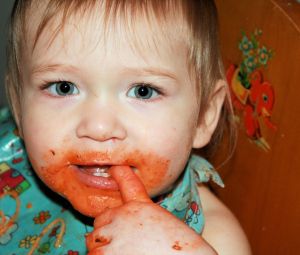 For many new mothers, knowing when to move to solid foods can be confusing. “From my oldest to my youngest now, it has kind of changed what the doctors told me. It varied between 4 to 6 months,” young mother Karin Shumway explained.
For many new mothers, knowing when to move to solid foods can be confusing. “From my oldest to my youngest now, it has kind of changed what the doctors told me. It varied between 4 to 6 months,” young mother Karin Shumway explained.
A recent study from the Centers for Disease Control and Prevention found more than 40 percent of mothers start to feed their baby thicker foods before four months, a full two months before the recommended age of six months currently encouraged by the American Academy of Pediatrics.
Doctor Polly Sheffield is concerned about the findings. “I think the results of the study are worrisome. Children don’t need to have solid food until six months of age,” Sheffield said. “Children younger than that, though, aren’t ready physiologically.”
The CDC survey shows the reasons mothers switched early to solid food. These reasons included:
89 percent: “My baby was old enough to begin to eat solid food.”

(stock photo)
71 percent: “My baby seemed hungry a lot of the time.”
67 percent: “My baby wanted the food I ate or in other ways showed an interest in solid food.”
Doctors say signs to look for besides age include the ability of the child to lift their head up on their own and making chewing motions with their mouth.
Pediatricians warn that introducing food too young can increase the risk of allergies and choking. Doctors suggest breastfeeding until the child is one year old.




